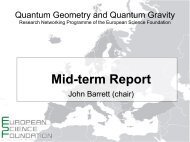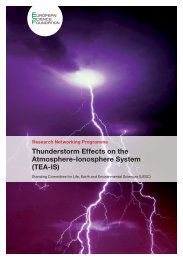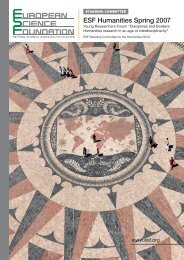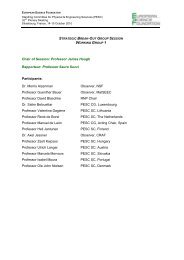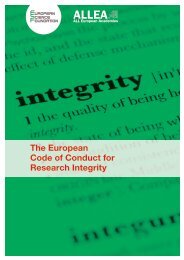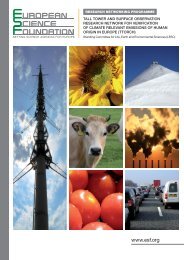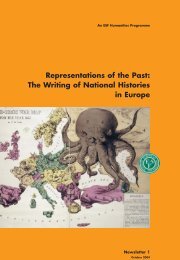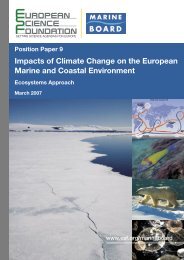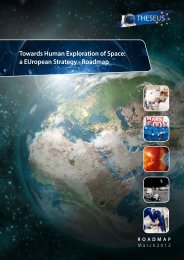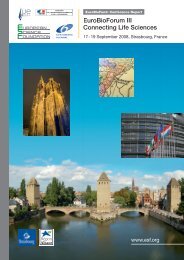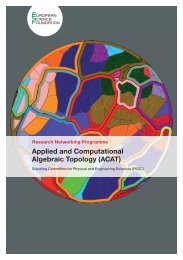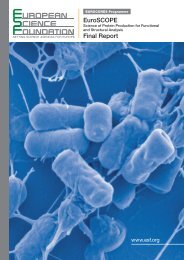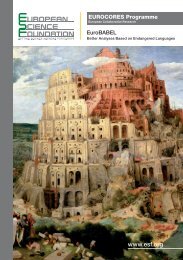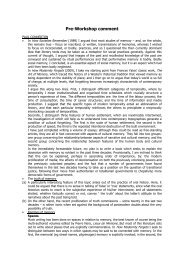Report - European Science Foundation
Report - European Science Foundation
Report - European Science Foundation
Create successful ePaper yourself
Turn your PDF publications into a flip-book with our unique Google optimized e-Paper software.
6. Indicators for Community<br />
Engagement<br />
There is a rich literature on the topic of indicators for<br />
community engagement and proposed sets of indicators<br />
that might be useful in evaluating the benefi ts,<br />
costs and otherwise of university-community interactions<br />
(e.g. Adams et al.; 2005; Ball & Wilkinson, 1994;<br />
Charles & Benneworth, 2002; Molas-Gallart et al., 2002).<br />
Indeed, community engagement as measured through<br />
research performance has become increasingly important<br />
in several <strong>European</strong> countries (Jongbloed, et al.<br />
2005). The Russell Group of Universities in the United<br />
Kingdom commissioned a report by the University of<br />
Sussex to provide advice on “…an analytical framework<br />
and a comprehensive set of indicators that may<br />
assist in the tracking and management of university<br />
Third Stream activities” (Molas-Gallart et al., 2002).<br />
Third Stream activities are defined as knowledge exchange<br />
and productive interactions with business,<br />
public sector organisations and the wider community,<br />
for the benefit of the economy and society. The<br />
research report came up with more than 30 indicators<br />
representing measures of knowledge transfer to<br />
the wider community. The indicators were placed in a<br />
framework diagram (see figure 2).<br />
In the UK, the Higher Education Innovation Fund<br />
(HEIF) supports higher education institutions in<br />
knowledge exchange and productive interactions<br />
with business, public sector organisations and the<br />
wider community, for the benefit of the economy and<br />
society. It represents a so-called third stream of funding<br />
component which may be seen as a reward and<br />
encouragement for knowledge transfer alongside research<br />
and teaching. The majority (about 75 %) of the<br />
HEIF funding is allocated by formula to universities on<br />
the condition that they submit plans for its use. A smaller<br />
amount (approximately 25 %) is available through a<br />
competition, for particularly innovative projects. The<br />
formula funding part is partly driven by data collected<br />
in a survey known as the Higher Education-Business<br />
and Community Interaction (HE-BCI) survey (see http://<br />
www.hefce.ac.uk/reachout/hebci/).<br />
The data relate to external income from different<br />
sources: contract research, consultancy and equipment<br />
services; regeneration and development income;<br />
Figure 2: The Russell <strong>Report</strong>: A conceptual framework for analysing Third Stream activities<br />
Source: Molas-Gallart et al., 2002<br />
HELF Theme <strong>Report</strong> | 49



